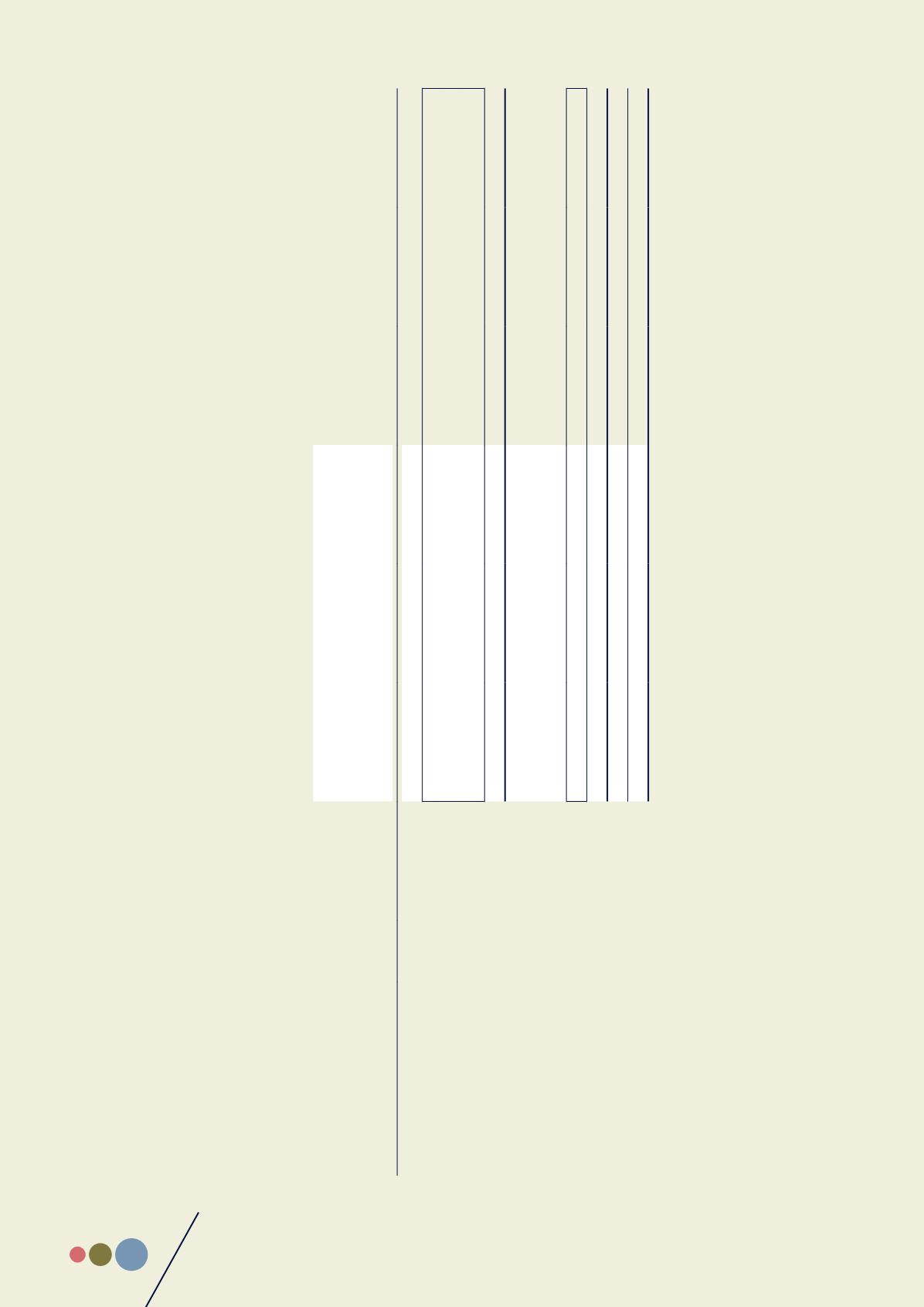

142
HSRC Annual Report 2016/17
PART E: Annual Financial Statements
In the course of the HSRC operations, the entity it is exposed to interest rate, credit, liquidity and market risk. The HSRC has developed a comprehensive risk strategy in order to monitor and control these risks.
The risk management process relating to each of these risks is discussed and disclosed under the headings below:
Interest rate risk
The HSRC manages its interest rate risk by fixing rates on surplus cash funds using short- to medium-term fixed deposits. The HSRC’s exposure to interest rate risk and the effective rates applying on the different
classes of financial instruments is as follows:
Note(s)
Effective
interest rate
(fluctuating)
2017
2016
Less than 12
months
R’000
1 – 5 years
R’000
Total
R’000
Less than 12
months
R’000
1 – 5 years
R’000
Total
R’000
Financial assets
Current accounts
1
3.00%
11,580
-
11,580
17,063
-
17,063
Short-term investments accounts
1
5-6.5%
49,727
-
49,727
94,084
-
94,084
Trade and other receivables
2
0.00%
43,727
-
43,727
30,388
-
30,388
Total financial assets
105,034
-
105,034
141,535
-
141,535
Financial liabilities
Measured at amortised cost
Trade and other payables
8
0.00%
29,786
-
29,786
31,911
-
31,911
Total financial liabilities
29,786
-
29,786
31,911
-
31,911
Net financial assets/(liabilities)
75,249
-
75,249
109,624
109,624
30.3 Credit risk
Financial assets, which potentially subject the HSRC to the risk of non-performance by counterparties and thereby subject to credit concentrations of credit risk, consist mainly of cash and cash equivalents and
trade receivables from non-exchange transfers. The entity only deposits cash with major banks with high quality credit standing and limits exposure to any one counterparty. Trade receivables are presented net
of the allowance for doubtful debts. The HSRC manages/limits its treasury counterparty exposure by only dealing with well-established financial institutions approved by National Treasury through the approval
of their investment policy in terms of Treasury Regulations. In addition, the credit risk exposure emanating from trade receivables is not considered significant as trade is largely conducted with reputable research
partners who have had and maintained good relationships with the HSRC in the past. Thus HSRC’s significant concentration risk is with its research partners. The analysis of ageing of receivables that are 30 days
and older is as follows:









